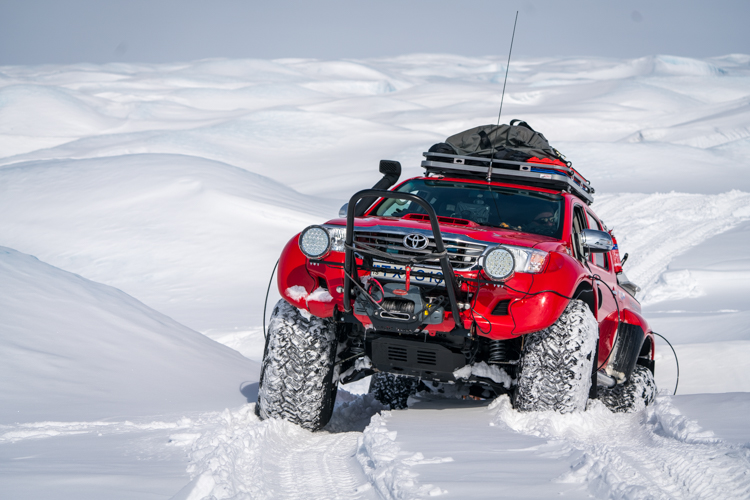Winter and polar travel present some of the most challenging and rewarding conditions for the overlander, (often) requiring in-depth planning, logistics, and specialized equipment. Even a trip to the local mountains for some four-wheeling in the snow will necessitate an additional degree of preparedness, which we think is all part of the fun. To assemble this list, we referred back to our equipment lists and notes from six overland expeditions to the Arctic, including crossing Greenland by 4WD and from our time in the Antarctic during a double-crossing of Antarctica.
A few considerations:
1. Weather can degrade quickly, so be prepared with additional clothing, blankets, food, fuel, and supplies.
2. Carry redundant methods of communications such as a cell phone, HAM radio, and radio beacon and/or satellite communicator.
3. Get a good tire gauge and air down. If you get stuck, air down further. We traveled as low as 2 psi while crossing Antarctica.
4. Bring extensive recovery tools and equipment as you will likely need them for your vehicle and potentially for others you meet along the way.
5. Let a few people know where you are traveling and when you are expected to return.
The Vehicle: The list of vehicles truly suitable for polar travel is short, with the clear choice for the last decade being the Arctic Trucks Hilux AT44 conversion. I have trusted these vehicles to get me to the South Pole (twice) and all the way across the Greenland ice sheet. My first trip with these vehicles was in Iceland, crossing several glaciers. Their performance and reliability are made possible due to thoughtful modifications like 44-inch Nokian tires, dual transfer cases, and a Land Cruiser 200 rear axle. With air lockers front and rear, and tire pressures into the low single digits, it is possible to ascend glaciers and travel on extremely soft snow. Recovery equipment includes a ComeUp winch and polar-rated MaxTrax. Due to the significant flotation, the ground pressure from the vehicle is less than that of a human footprint. arctictrucks.com

The AT44 Hilux I drove with Emil Grimson across the Greenland ice sheet with the team from E7
Winter Clothing:
Base Layers- For a base layer, I have typically used the Triple Aught Design Alchemy half-zip and Alchemy pant. Made in the USA from Polartec Power Wool. It uses a matrix of merino wool and an outer synthetic layer to quickly manage moisture. I also used the Aether merino base layers in Greenland, with good success and odor management, which was a proper test given the 20+ days without a shower. For socks, we have had good luck with Baffin products. 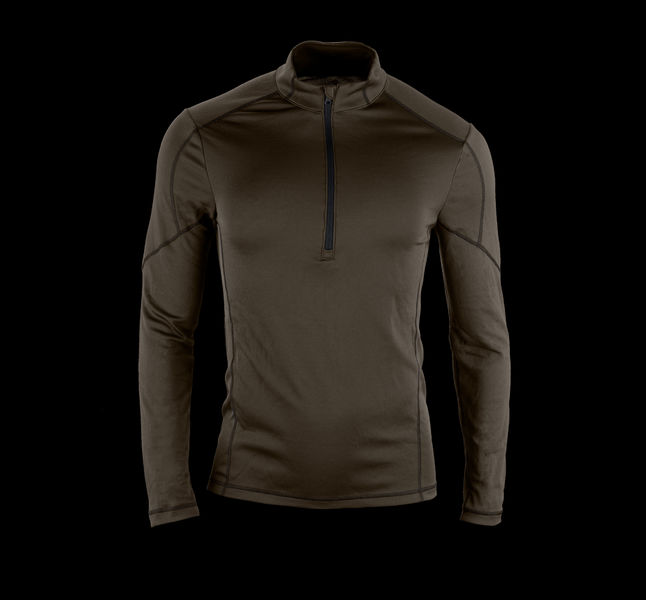
TAD Alchemy Base Layer
Mid-layers- One of the most significant lessons I learned in my early polar travels was the critical considerations around mid-layers. It is a common mistake to use base layers that are too heavy, along with a parka that is too warm, like the monster Canada Goose expedition parka units. Those jackets are typically only useful for occupants of fixed stations, where staff members don a coat for movement between facilities or low-exertion activities in extreme cold. They are really too hot for moving around vehicles, scouting, setting up camps, etc. As a result, the mid-layer (or layers) is the key to regulating temperatures and insulation. These are also the layers you typically keep on while driving. My favorite is a thick wool sweater like the Triple Aught Design Special Service Sweater combined with a windproof and wicking layer like the A3 Alpha Lochi from Beyond Clothing.
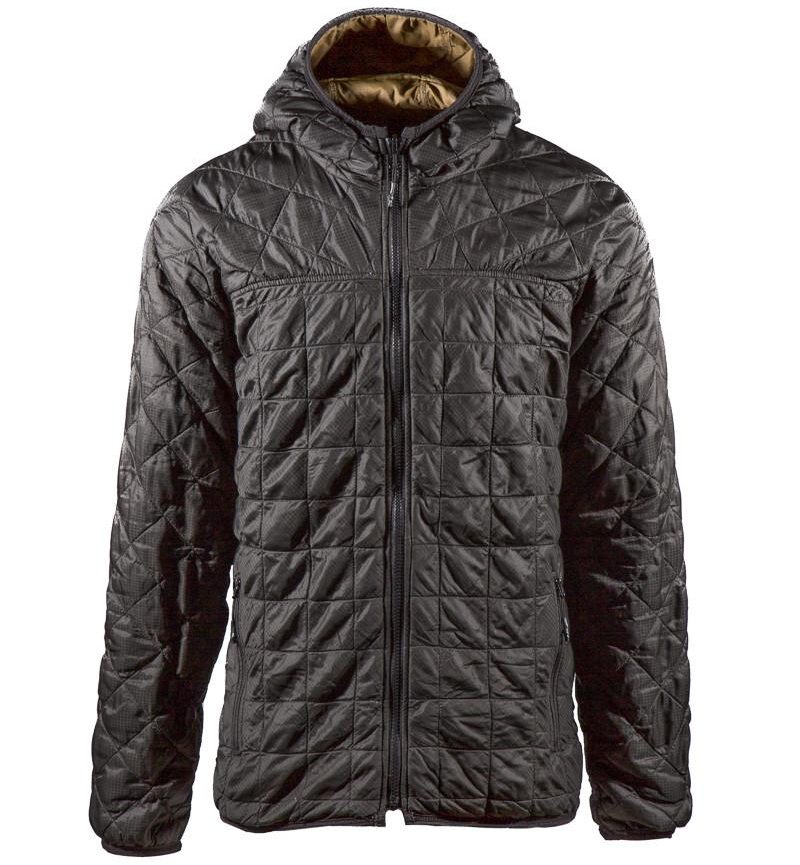
TAD Special Service Sweater and the Beyond Clothing Alpha Lochi
Outer Layers- The parka is one of the most important considerations for polar and extreme conditions travel, as it is what protects us for extended duration outside of the vehicle while setting up camp, and preparing food and melting snow for water. I want my parka to be warm but not restrictive. In Antarctica, I used a Baffin parka in bright orange (bright colors are required for safety while on the plateau), but for Greenland and my more recent cold conditions trips, I have used the Aether Crest Down Jacket. It is ideal when paired with the systems listed above down to below -40°F. It is the best polar jacket I have used to date for vehicle-based polar expeditions. For pants, I used either the Aether Explorer or the 66 North Snaefell shell pants.
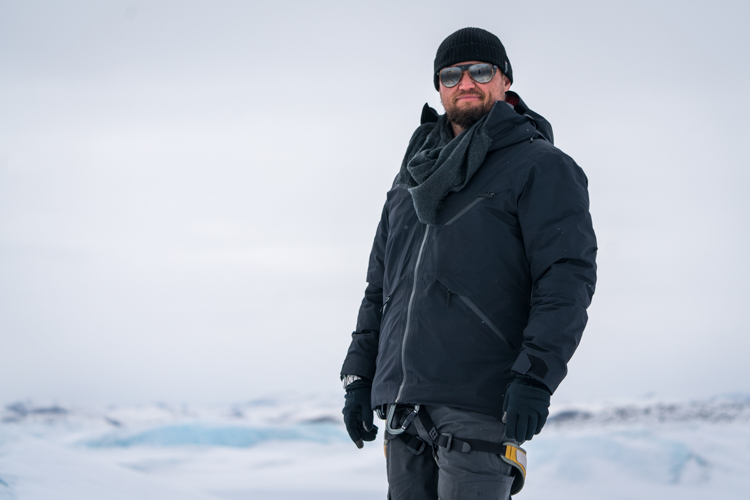
The author in his Aether Crest parka after completing the first long-axis vehicle crossing of the Greenland ice sheet with Expeditions 7.
For non-polar winter conditions, I still prefer to layer and often rely on a wool base layer like the Triple Aught Design Huntsman Henley (Made in the USA). I own five of these classic Henleys because I wear them almost daily in the winter. They also work well when combined with a fleece jacket, or my new go-to, the Prometheus Design Werx Tycho Down Hoodie (also made in the USA).
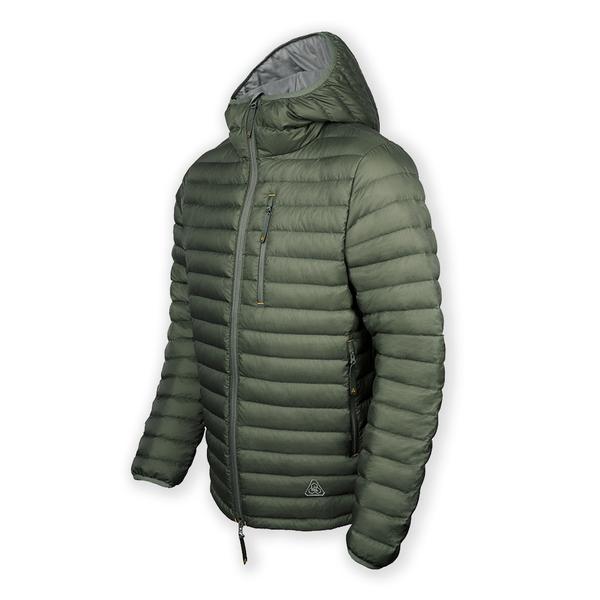
Boots- For almost all of my polar and non-polar winter driving, I use the Hanwag Alaska GTX, which has proven warm to -20°F and tolerable down to -40°F. Like the parkas, there is a significant difference between solutions for active scenarios and just standing around below zero. These Hanwags are my active and driving choice and served me well in the Arctic.
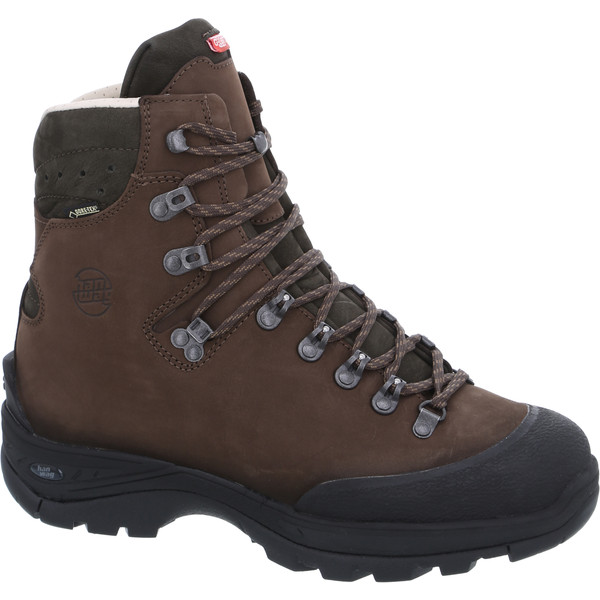
Additional Personal Equipment:
Sunglasses- For polar travel, I have used both the Julbo Vermont Classic and the Vuarnet Glacier 1315. Goggles are also critical in higher winds and in whiteout conditions. The color temperature of the lens is also critical for seeing detail during whiteouts.
Balaclava- A balaclava is critical once temps get below 0°F and in even warmer conditions once the wind chill becomes notable. The mask helps protect the skin on your face and also allows inspired air to warm slightly before it enters the lungs.
Wool cap- Given how follicly challenged I am, a thick wool beanie is critical. I have used the Prometheus Design Werx merino wool watch cap for years.
Gloves- Keeping my hands warm while also operating a camera can be difficult, so I use a combination of silk liners, mid-weight gloves that can be used for driving, and then ice-climbing gloves for extreme conditions. I can work on vehicles, operate refueling hardware, and still take images with these Arc’teryx RUSH SV. They are expensive ($400), but I have simply not found anything that works as well for my needs.
Harness and safety lines- When traveling in crevasse areas, I would wear a full harness and connect a static line to the vehicle. During the Greenland crossing, I went hip-deep into a crevasse, and we spent several hours recovering the trailer from a crevasse as well. Safety is paramount.
Sleeping Bag- I have used the NEMO Equipment Canon -40° sleeping bag for both of my polar expeditions. Tip: Add a Nalgene bottle filled with boiling water to the foot of the bag for instant Zzzzzs.

Gear Bags- For hauling all of this bulky clothing, I typically use Red Oxx expedition series bags because of the compression straps and lifetime warranty.
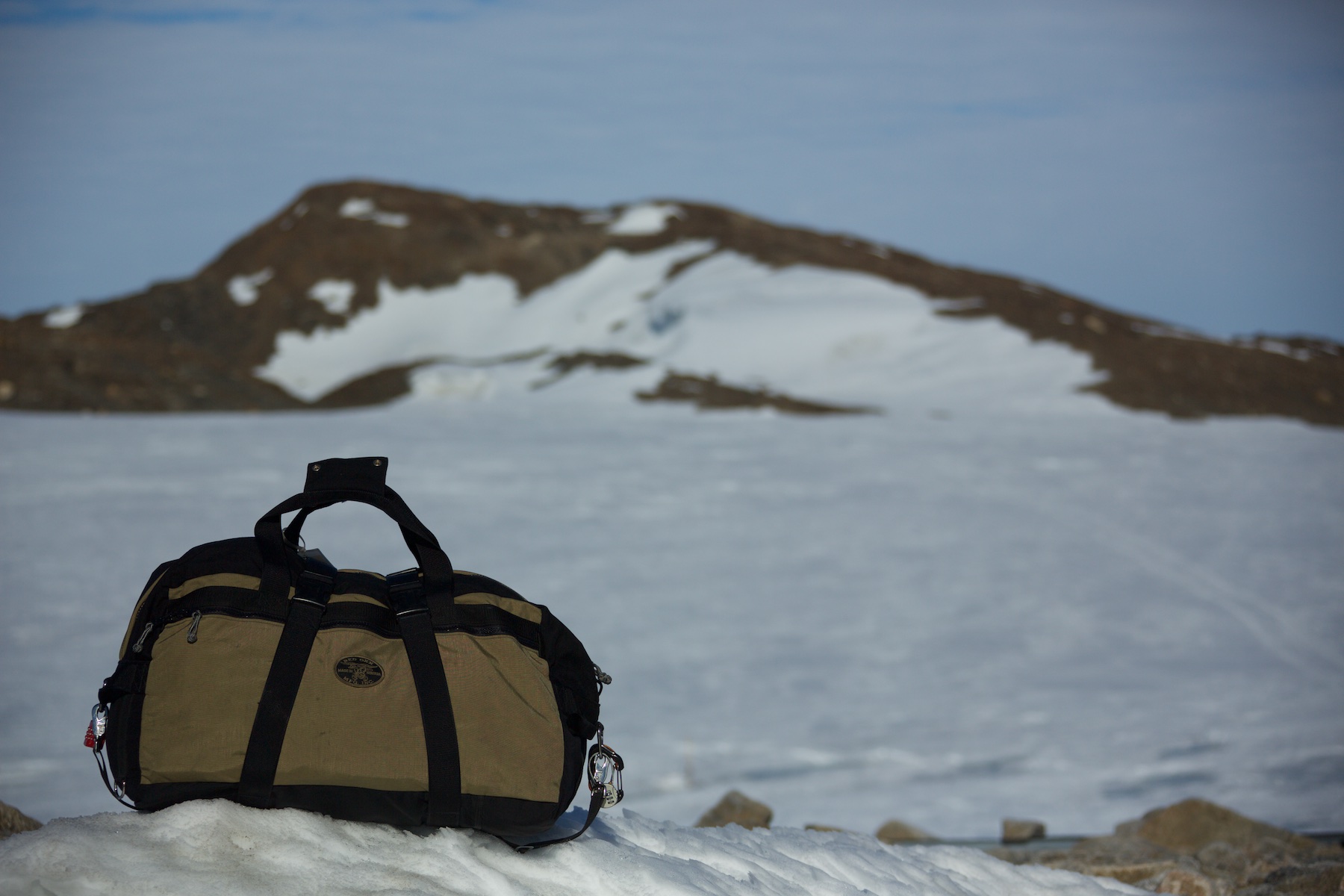
One of my Red Oxx bags in Antarctica. The compression straps are key with winter gear (which is quite compressible).
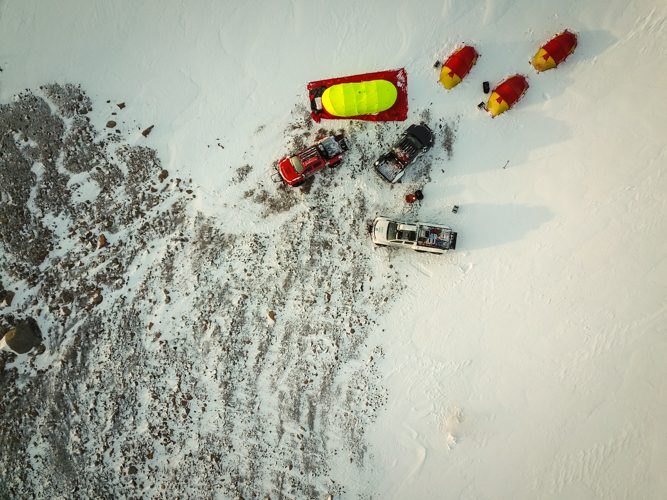
Our camp on the northern end of the Greenland ice sheet.
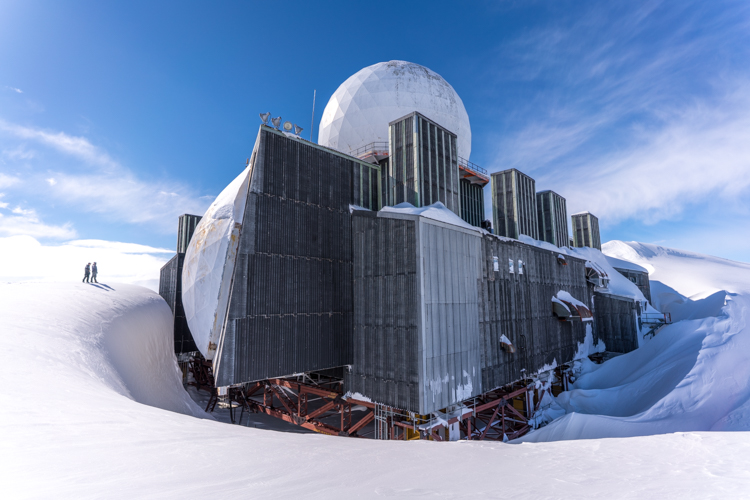
Right out of a science-fiction novel, an abandoned US radar installation is located on the Greenland ice sheet.
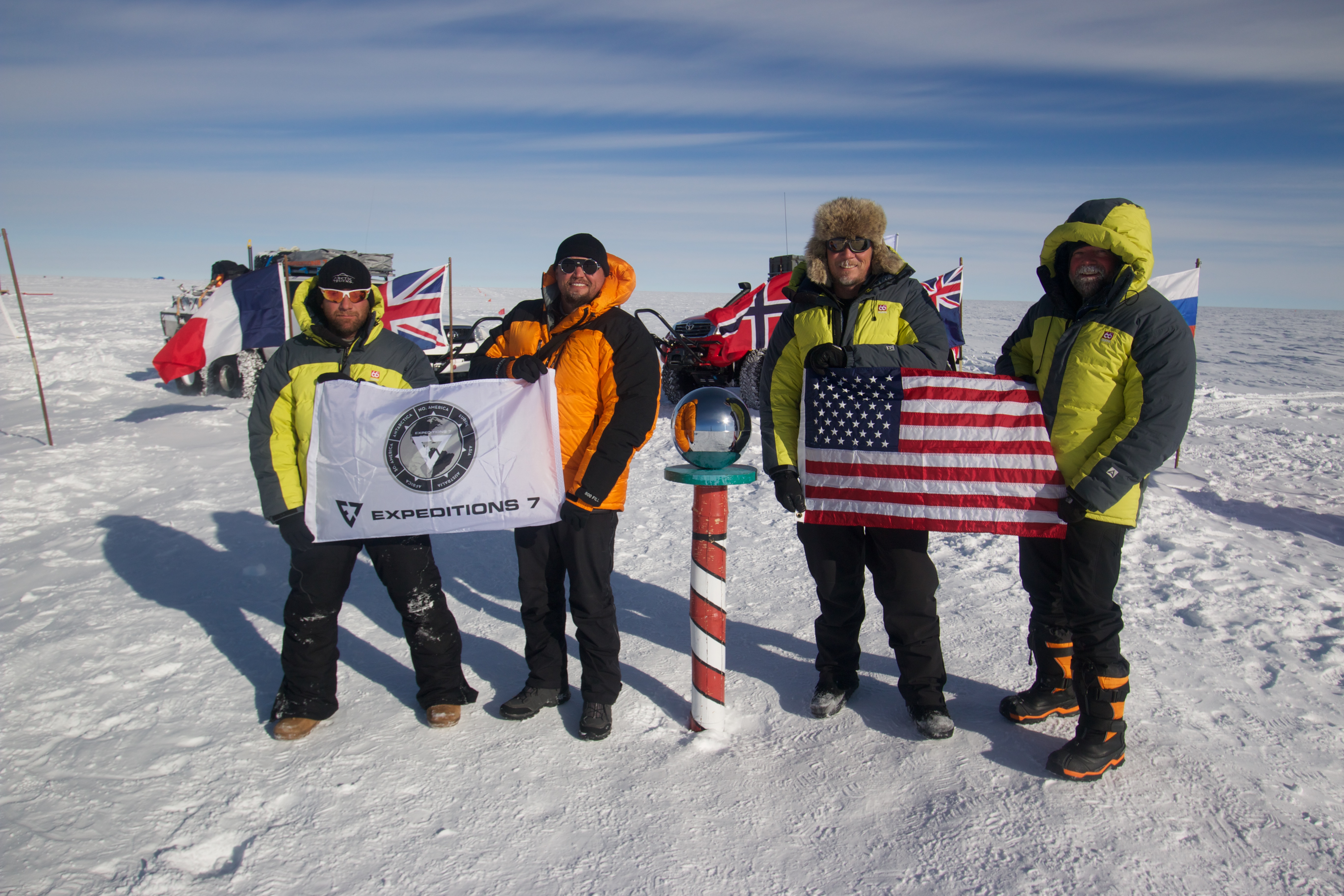
The author with his fellow Expeditions 7 teammates after arriving at the South Pole (G. Karel, S. Brady, G. Miller, and C. Collard). 
Unloading the Arctic Truck from the Russian IL76 in Antarctica.
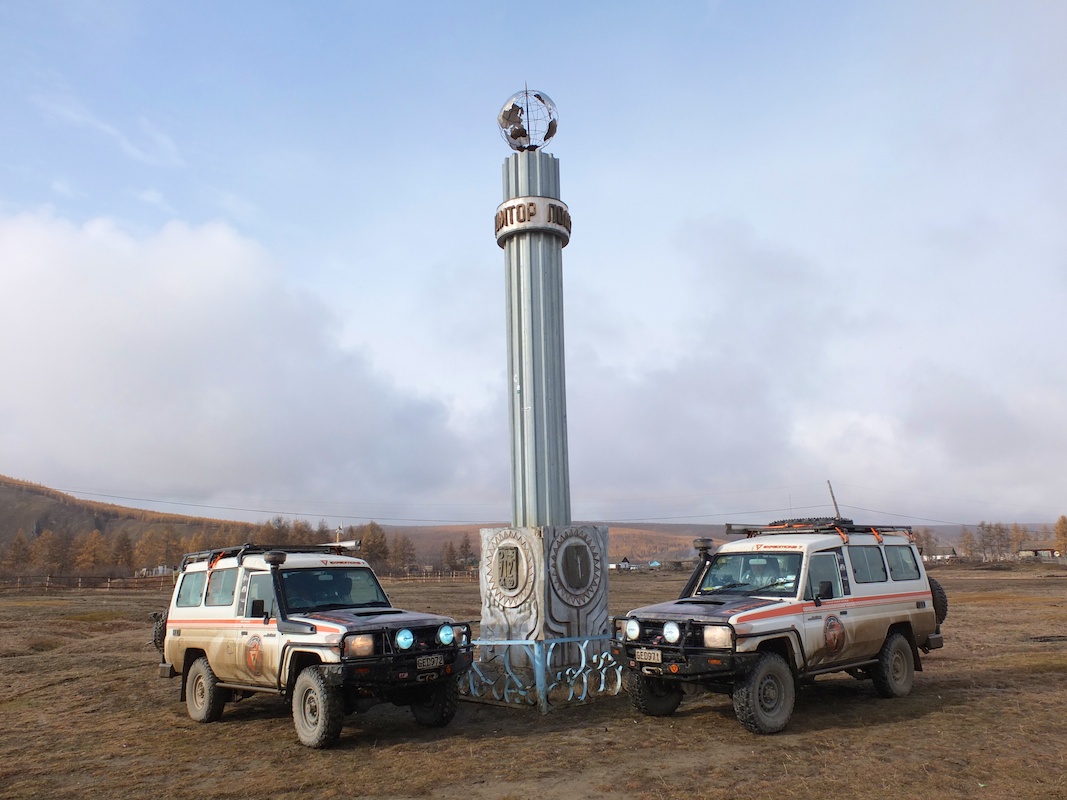
The author at the Pole of Cold in Siberia, the location of the coldest recorded temperature on land in the Northern Hemisphere (-90° F).
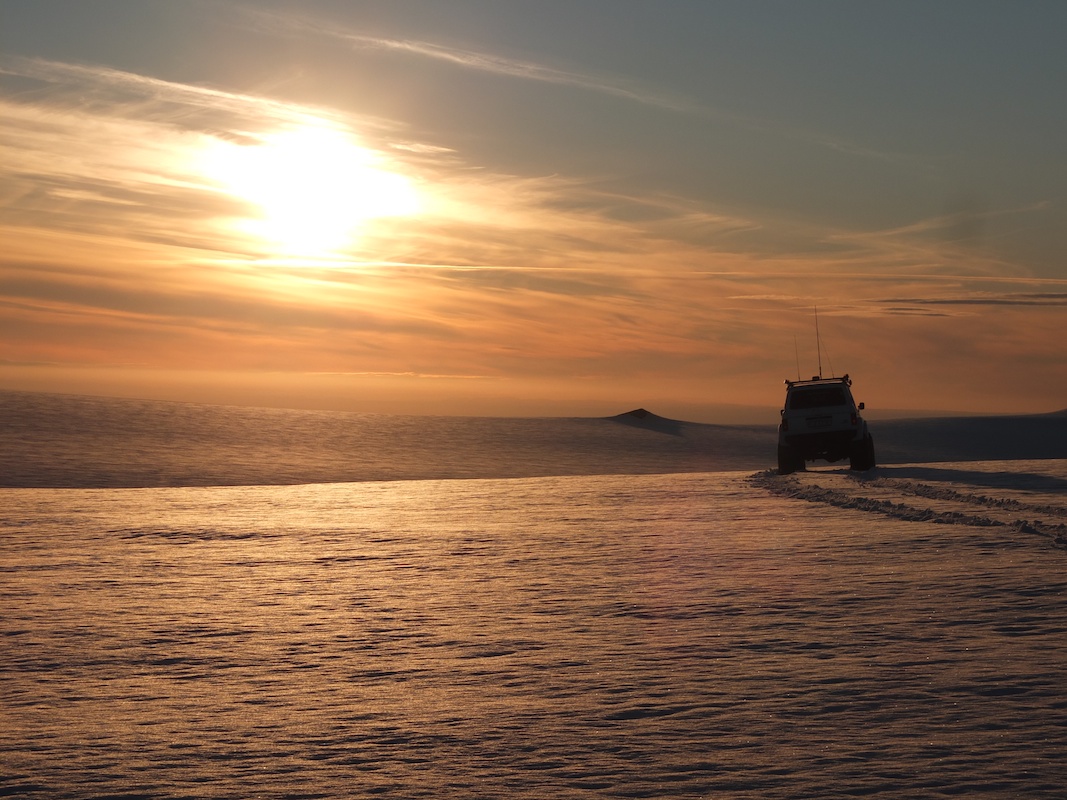
Iceland, crossing the Langjökull glacier


